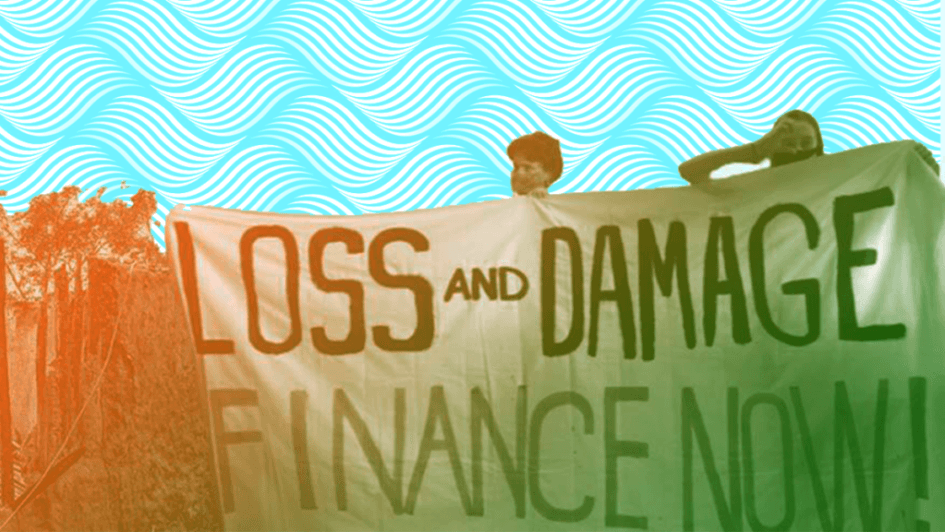In the high-stakes arena of global climate action, the ‘Loss and Damage Fund’ emerges as a critical yet underrealized solution. As climate change unleashes destruction across the globe, its fiercest blow falls on the Global South, where vulnerable communities face the harsh, immediate fallout of environmental catastrophes. The concept of a fund specifically designed to mitigate these losses and damages shines as a beacon of hope. However, its effective implementation lags, leaving those in dire need waiting for a promise yet to be fulfilled. This fund represents not just a financial commitment, but a moral imperative in our collective fight against climate change.
The Harsh Reality of Climate Change
Climate change is no longer a looming threat of the distant future; it’s a stark, undeniable reality unfolding before our eyes. Its effects are being felt globally, with an unyielding intensity. Raging wildfires, catastrophic floods, severe droughts, and intensified storms are wreaking havoc, leaving a trail of devastation on human lives, ecosystems, and economies. The impact is both overwhelming and heartbreaking.
The Global South, spanning Africa, Asia, Latin America, and the Pacific, is on the frontline of this climatic assault. These regions, contributing the least to greenhouse gas emissions, are suffering the most severe impacts. Imagine subsistence farmers watching helplessly as their crops fail due to unpredictable weather, coastal communities witnessing their homes being swallowed by rising seas, and indigenous groups struggling to preserve their ancestral ways in the face of relentless change. These are not isolated incidents but chapters in a broader story of loss and resilience in the face of a global crisis.
The Promise of the Loss and Damage Fund
In response to the stark disparity and the pressing need to mitigate the losses suffered by vulnerable communities the United Nations Framework Convention on Climate Change (UNFCCC), introduced the Warsaw Mechanism on Loss and Damage in 2013. This initiative was designed as a lifeline, offering crucial financial and technical support to the world’s most susceptible nations. It aimed to empower them in adapting to the relentless impacts of climate change and to aid in their recovery from irreversible damages.
Yet, despite its ambitious and noble intentions, the reality of the fund’s impact is soberingly different. The Global South, increasingly battered by climate adversities, finds itself entangled seemingly intractable challenges when trying to access this much-needed support. The path to assistance is obscured by unclear funding processes, daunting bureaucratic obstacles, and a disheartening shortfall in contributions from wealthier nations. The bold commitment by developed countries to mobilize an annual $100 billion for climate finance, including for Loss and Damage, has fallen dramatically short of expectations, deepening the distress of those in dire need.
The Role of Renewable Energy in Climate Adaptation
Renewable energy sources like solar, wind, hydro, and biomass are more than sustainable alternatives to fossil fuels; they’re catalysts for resilience and progress. Solar-powered irrigation systems, for instance, offer smallholder farmers a shield against climate unpredictability, ensuring stable crop production even during droughts. Beyond agriculture, renewables drive local economies by powering small industries and community enterprises, creating new income opportunities and reducing reliance on unstable sectors. They also play a crucial role in disaster response, keeping communication, healthcare, and emergency services running during crises. Moreover, by cutting greenhouse gas emissions, renewables pave the way for environmental sustainability, an essential component of long-term climate resilience. This is not just energy evolution; it’s a revolution in how we live and thrive.
Integrating Renewable Energy into the Loss and Damage Fund
The Loss and Damage Fund, aimed at tackling climate-related impacts, stands to gain immensely from embracing renewable energy. By channeling funds into renewable projects in at-risk areas, we can accelerate their uptake, providing sustainable defenses against future climate threats. This approach not only builds local capacity in managing and advancing these technologies but also sparks economic growth. Moreover, forging partnerships between governments, private entities, and international bodies will pool expertise and resources, ensuring the effective rollout of renewable initiatives. This strategy promises a resilient and economically vibrant future in the face of climate challenges.
Conclusion: A Path to Resilience and Adaptation
The battle against climate-induced losses finds a powerful ally in renewable energy, a beacon of hope with its promise of economic empowerment and environmental sustainability. As a cornerstone of climate adaptation strategies, renewable energy is crucial. Its integration into the Loss and Damage Fund marks a pivotal step in fortifying vulnerable communities against climate adversities. This move, however, demands collective action, strong policies, and dedicated investments. Turning to renewable energy is more than a choice; it’s an imperative for protecting livelihoods, enabling adaptation, and countering the escalating threat of climate change. The time is ripe to harness the transformative power of renewables, not just for energy, but as a symbol of resilience and hope in our rapidly changing world.
